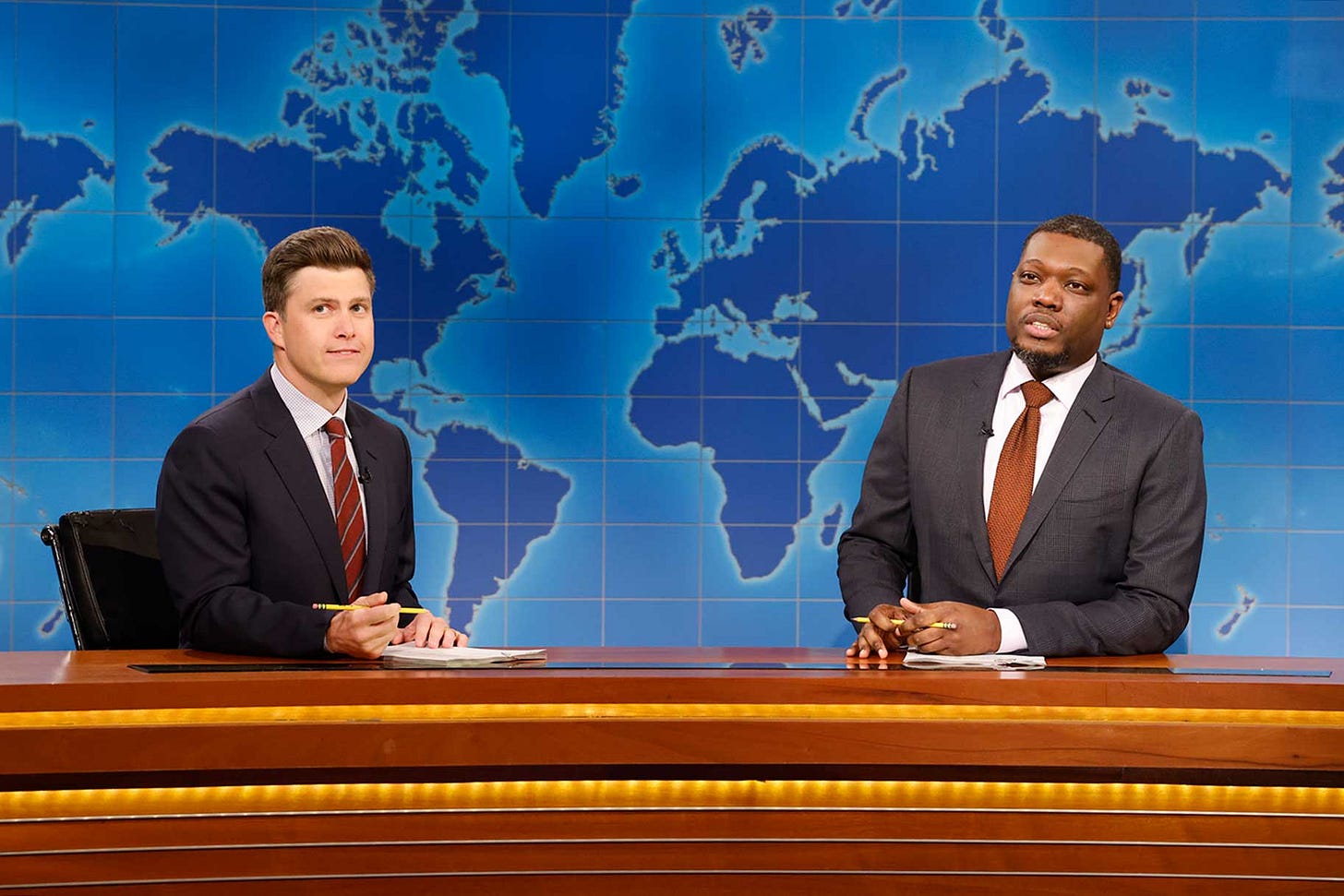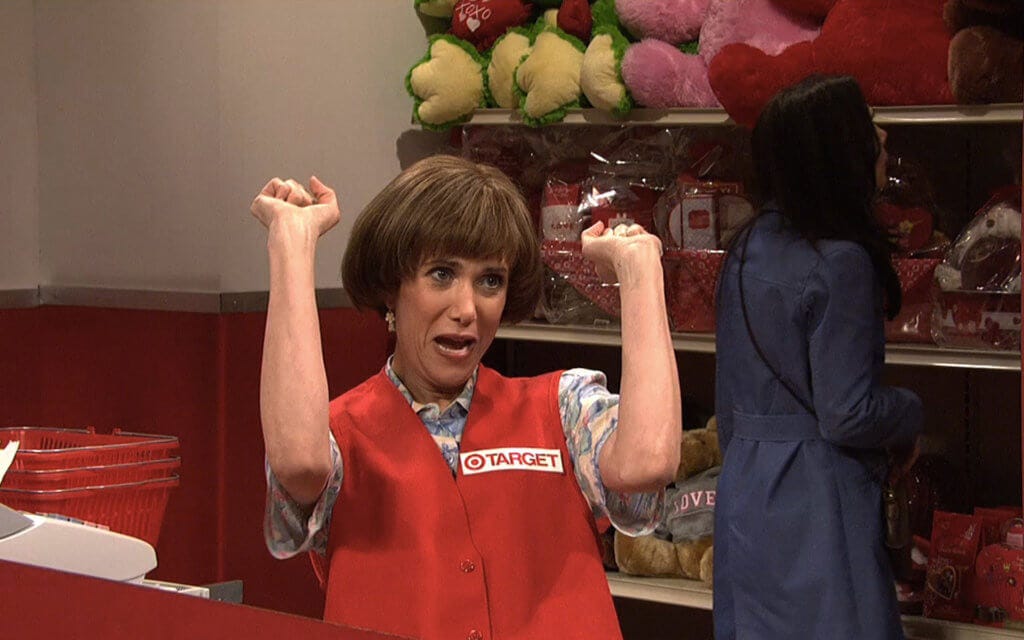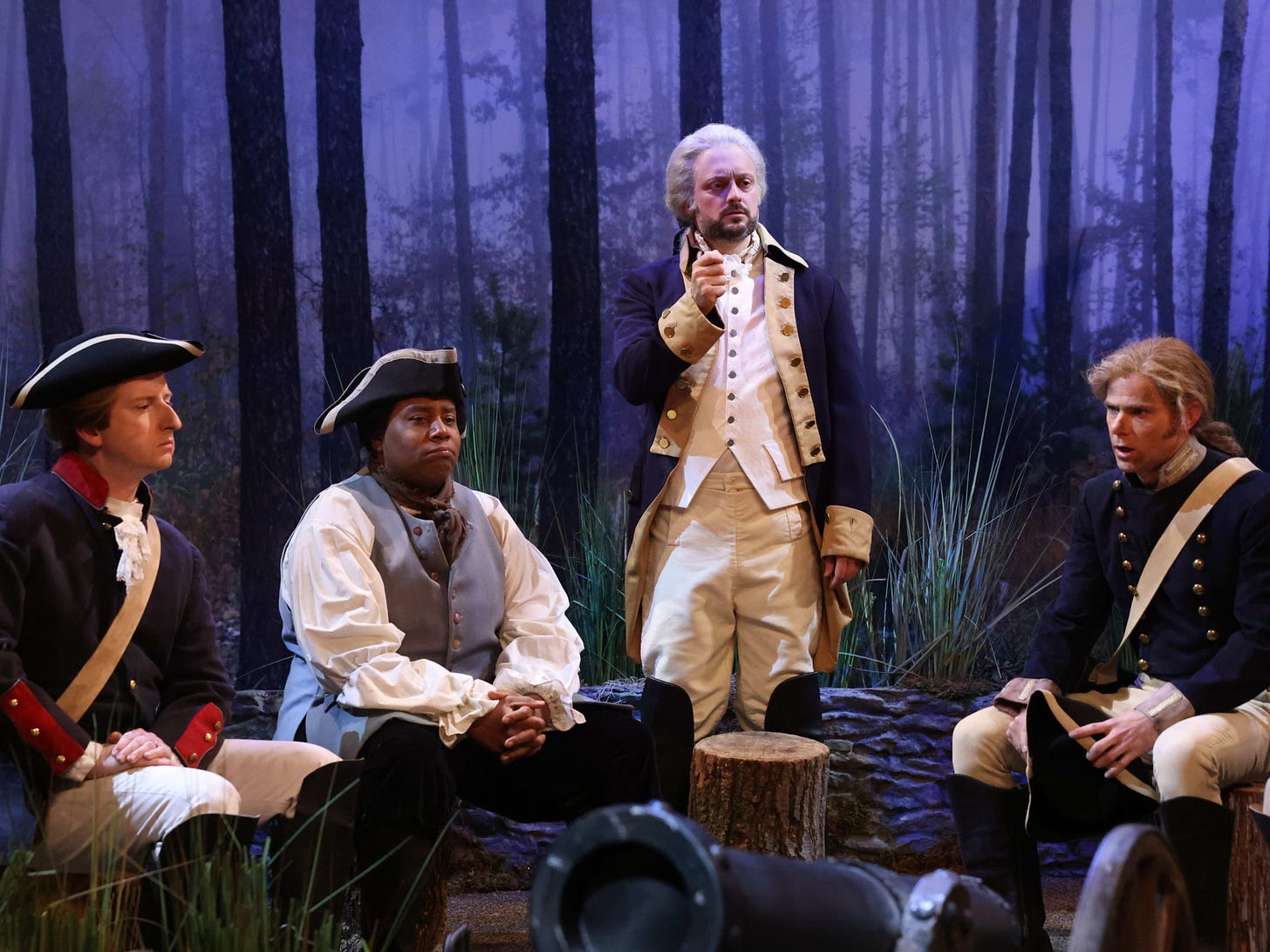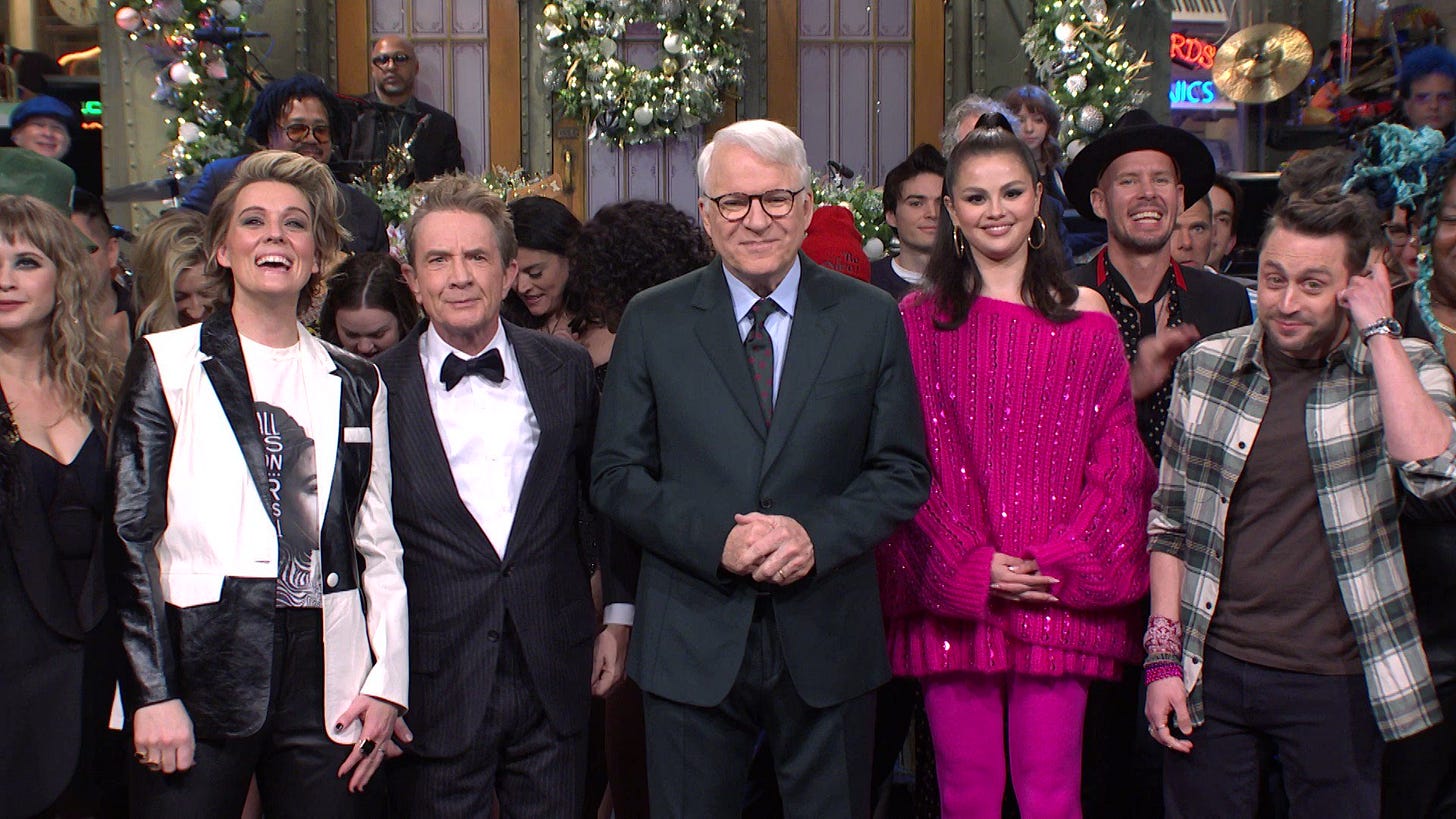The Instigation Dispatch: 9.17.25- The Saturday Night Live Paradox (FREE)
How one show is at the crossroads of a generational shift, where it's too much and not enough at the same time, and can it (and the rest of linear TV) survive?
The Saturday Night Live Paradox: How To Survive A Generational Shift
Saturday Night Live has always been an institution. It’s the place where the cultural moment is supposed to be defined, packaged, and served live at 10:30 p.m. Central on NBC. It’s where the “Not Ready for Prime Time Players” became legends, where presidential campaigns met their comedic foils, and where you could stay up late, watch sketches with your friends, and feel like you were part of something bigger. But in 2025, the show sits in a paradox that’s not just about its own survival—it’s a mirror for linear television as a whole.
SNL is too much and not enough at the same time.
It’s too much in that it’s a variety show trying to operate in an environment where nobody has the patience—or the appetite—for that kind of variety. There’s no algorithm neatly feeding you the next sketch that fits your mood, no “like” button to reward your favorite character, no seamless playlisting of clips that keeps you watching into the night. To experience SNL, you have to commit to the whole thing. Ninety minutes. Commercial breaks. Cold open, monologue, sketches, Weekend Update, musical guest, and goodnights. That’s a lot to ask in a world where most viewers live in the infinite scroll of TikTok, Instagram Reels, or YouTube Shorts.
At the same time, it’s not enough. The show is still predicated on Baby Boomer and Gen X ideas of cultural relevance—that a live sketch show on network TV can be the culture. But in 2025, memes drive the zeitgeist. Moments are made and destroyed before Lorne Michaels even gets the cue cards printed. A joke about the news cycle that SNL crafts in a week may already be stale by Saturday. A cast member’s perfectly rehearsed bit is often competing with a 19-year-old’s raw, funny, badly lit iPhone video that already went viral three days earlier. Production value doesn’t matter in a meme economy, velocity does.
That tension, between being too much and not enough, is the paradox of SNL. And it’s the same paradox threatening all of linear television.
The Burden of “Appointment Viewing”
The question facing SNL is the same one facing every broadcast network: how do you capture and keep new viewers who aren’t willing to give up an hour, or even 22 minutes, to programming that isn’t guaranteed to pay off?
Think about it: the average person under 40 rarely sits down to watch something live unless it’s sports or maybe an awards show. Instead, they’re on their couch binging prestige dramas like Succession or The Last of Us, which deliver cinematic spectacle and cultural conversation all at once. Or they’re running back comfort-food reruns like The Office, Friends, or Martin; shows that give them a nostalgic retreat. These are reliable payoffs.
But SNL? It can’t promise that every sketch is a hit. It can’t promise that every joke lands. Watching the show live is a gamble, and modern audiences are not gamblers. They want certainty. They want the algorithm’s guarantee that the next thing in the feed will match their mood.
Linear TV still operates on the assumption that “appointment viewing” has power. And to some extent, it does, live sports still pull in the biggest audiences. But even sports are fragmenting across streaming services, regional blackout restrictions, and highlight packages designed for TikTok instead of SportsCenter. If even the NFL has to chase eyeballs in real time, what chance does a comedy show with a 90-minute runtime have?
The Illusion of Cultural Centrality
For Boomers, SNL was the place where the culture happened. Chevy Chase’s Gerald Ford impression, Eddie Murphy’s Gumby, Chris Rock’s Nat X, Tina Fey as Sarah Palin—these weren’t just skits; they were the conversation. They were what everyone at work or school would talk about on Monday.
But that model assumes a monoculture; a world where everyone is watching the same thing at the same time. That world is gone. Today’s cultural moments happen in shards and fragments. A meme born on Black Twitter may never cross over to Facebook moms. A TikTok trend among teenagers may never touch the timelines of Gen X professionals. A Twitch streamer’s offhand comment might shape millions of minds while being completely invisible to traditional media.
SNL still acts like it’s the cultural hub when, in reality, it’s now just one node among thousands. When the show tries to “go viral,” it’s playing catch-up. By the time “Weekend Update” gets to a joke about the week’s news, Twitter/X has already gone through five different meme cycles about it. The punchline is old news.
This is not to say that SNL doesn’t still create memorable sketches, it does. But those sketches only matter to the extent that they can live outside the linear TV format. A great sketch will get clipped, posted to YouTube, chopped into memes, shared on TikTok, and maybe travel. In other words, the show survives not because people watch it live, but because it can be broken down into the same bite-sized clips that dominate online culture.
The Starship and the Riverboat
NBC knows this. That’s why they keep hiring new cast members with big online followings. TikTok stars. Instagram comedians. Alternative comedy influencers. On paper, it’s a smart move, bring in the people who know how to go viral.
But here’s the problem: dropping a TikTok star into the SNL machine is like giving a starship captain command of a riverboat. Sure, both are technically vehicles, but they operate on completely different principles. TikTok creators are used to controlling the camera, editing their own material, and responding to their audience in real time. On SNL, they’re reading off cue cards, performing live for millions, and locked into a format that doesn’t bend easily to their instincts.
The result is often awkward. What makes someone magnetic online doesn’t always translate to the big stage. And the show’s format doesn’t allow for the kind of experimentation that made these performers stars in the first place. Instead of revitalizing SNL, the new media imports end up feeling stifled—brilliant in their own lane but diminished on the stage.
What This Means for Marketers
For marketers, the reckoning is clear: if SNL can’t bridge the gap between linear TV and new media, what hope does anyone else in the late-night ecosystem have? The Tonight Show, The Late Show, Jimmy Kimmel Live!—all of them are built on the same premise as SNL: tune in at a certain time, watch a variety of content, and hope something sticks.
But audiences don’t want variety, they want specificity. They don’t want a 90-minute buffet, they want the one dish they’re craving at that exact moment. They don’t want to be surprised by a sketch they don’t like, they want to swipe past it immediately.
For advertisers, that means the old value proposition of late-night sponsorships is shaky. Sure, you can buy spots during SNL. Sure, you can sponsor a segment. But what you’re really buying is a lottery ticket: maybe people will see your ad, maybe they won’t. Maybe your brand will get memed into the conversation, maybe it won’t.
Contrast that with targeted media buys on YouTube, TikTok, or Instagram, where you can micro-target not just the audience but the moment. Want to reach Black men over 40 with a sneaker drop? You can find them. Want to hit suburban moms with a frozen food product? You can reach them at 8:17 p.m. on a Wednesday. That’s the power of algorithmic media.
So why spend on linear late-night TV at all? Nostalgia? Prestige? A bet on the off chance that your ad becomes part of the cultural conversation? Those are risky bets in a time when marketing budgets are scrutinized for efficiency and ROI.
The Future of the Format
So what happens next? Does SNL die? Probably not. Institutions rarely die outright; they adapt, shrink, and settle into niche relevance. Think of it like baseball: once the defining American pastime, now a slower, older game competing with football, basketball, and e-sports for attention. Baseball still exists, but it’s not the cultural monolith it once was. SNL will follow a similar path.
What’s more interesting is what its decline signals for the rest of linear TV. Prestige dramas may still pull viewers, but they’re increasingly produced for streaming platforms. Sports will keep linear alive a little longer, but even there, streaming is carving out a bigger piece. Awards shows are shrinking in cultural relevance. Reality TV is fragmenting across platforms.
The linear bundle is unraveling, and SNL is the canary in the coal mine.
The Reckoning
The Saturday Night Live paradox—too much and not enough—mirrors the existential crisis of linear TV. These shows are built for an era when audiences accepted being passive, when they’d sit through commercials, when they’d tune in because there was nothing else on. That world doesn’t exist anymore.
Audiences are active now. They curate. They demand. They swipe. They decide in seconds whether something is worth their time. And in that environment, the sprawling unpredictability of a sketch show feels outdated. It’s asking for too much commitment while offering too little certainty.
Marketers should take note. The lesson isn’t just that SNL is struggling—it’s that the very foundations of linear TV advertising are eroding. Betting big on formats that don’t guarantee attention is a luxury few brands can afford. The future belongs to those who can deliver cultural relevance with speed, specificity, and adaptability.
The paradox of SNL is that it’s still running, still trying, still putting on a show every Saturday night. But the real show is happening online—chopped up, memed, reposted, and reimagined. That’s where the audience is. That’s where the culture is. And that’s where brands need to be.





